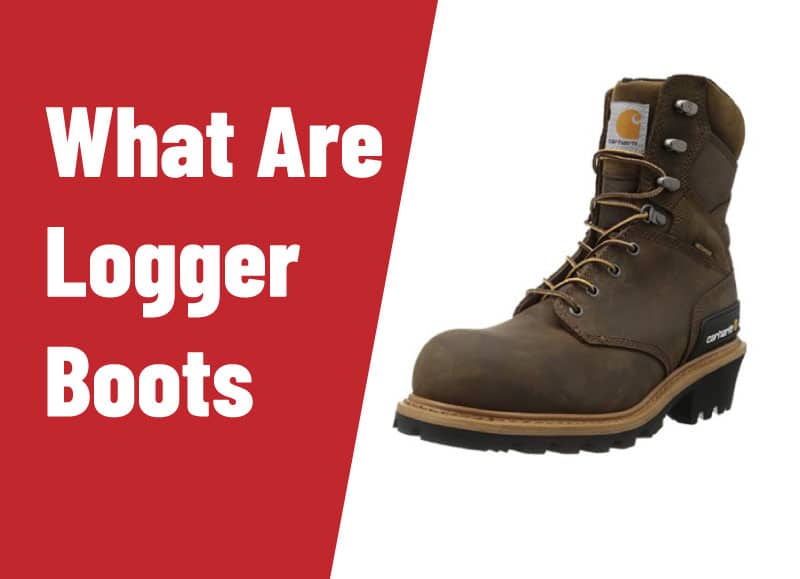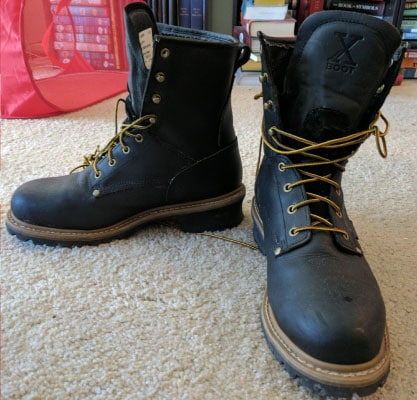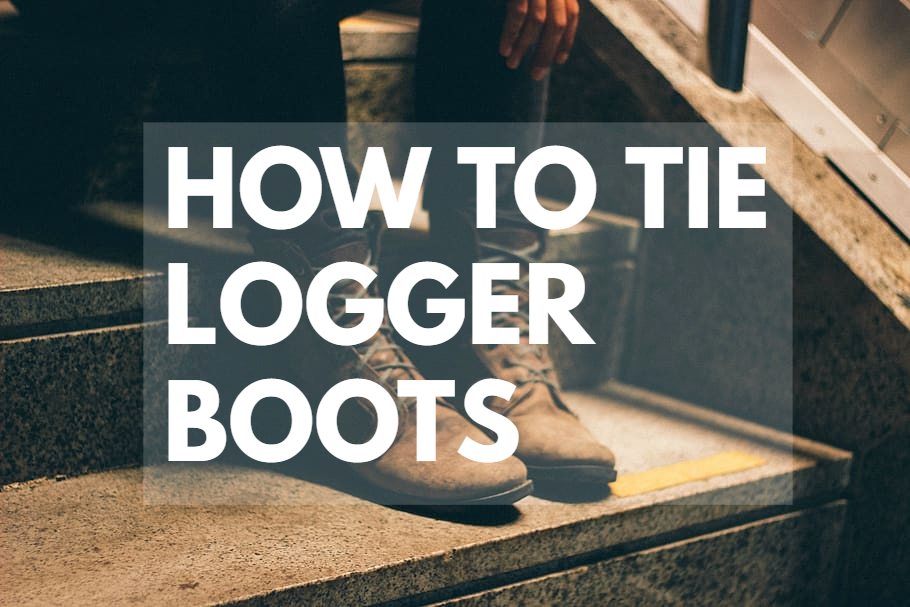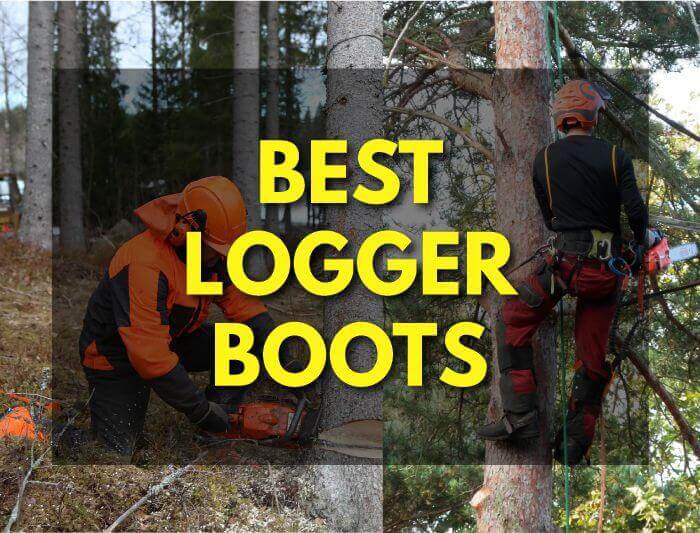Logger boots are heavy-duty work boots designed for loggers and other outdoor workers. These boots are typically made with thick leather, steel toes, and sturdy soles for maximum protection and support.
Logger boots are rugged and tough, built to withstand the wear and tear of outdoor work. They are often favored by loggers, lumberjacks, and other workers who spend long hours in rugged terrain, as they provide excellent protection and support for the feet and ankles.
The boots typically feature steel toes and plates, thick leather uppers, and durable outsoles with deep, aggressive treads for superior traction. Some logger boots also feature waterproof or insulated materials to protect the feet from cold, wet conditions. While designed primarily for work, logger boots can also be a great choice for hiking, camping, and other outdoor activities.
A good working boot is necessary for people who need to stay outside for long hours and on different terrains. You may have heard of logger boots if you have ventured to purchase premium working boots. They are a bit different than any standard work boots, but what are logger boots? Let’s find out.
Contents
What are logger boots, and how are they different from working boots?
Logger boots are heavy-duty, specific work boots that can handle and improve traction in wet, uneven terrains. With a slightly different and more durable construction, these boots perform better when an employee needs to work on slippery ground. They also come in handy while climbing spurs, thanks to the raised heel of these boots.
Logger boots can handle all the situations that a standard working boot can handle; moreover, they provide better protection and traction most. Workers from the logger industries started to use them first, and hence they named them logger boots.
These boots are best for working through muck and brush, along with many types of undergrowth. Though we are used to seeing logger men sporting these boots, soon these became favorites in some other professions, too. Many anglers and linemen prefer to wear logger boots in their profession.
You can typically differentiate logger boots from their raised heels and deep lugs; that makes them a great choice for use in challenging terrains. The heel helps a lot in climbing and getting a better grip on slopes. Though most logger boots come with laces, there are some pull-on designs also available.
Different parts of a logger boot
Let’s take a closer look at the different parts of a logger boot.
- Welt construction
Welt construction is a way of constructing boots that makes the boot the most durable. It is a stitching technique that consists of stitching the insole, midsole, outsole, and boot upper together, which makes the boot rigid and water-resistant. Most companies build boots using this method. However, the method also makes the boots feel stiffer.
- High heel
Typically, logger boots have a heel height of at least two inches. That helps keep the foot out of moisture by elevating it. The raised heel also allows room for aggressive lugs, which also improves grip significantly. These boots, in general, have a round-toe design.
- Lace ankle support
Logger boots have a height of nine inches on average, which goes past the ankle. The laces tighten up to give you a snug fit. A high ankle will provide ankle support and prevent injuries also while keeping your boots dirt, brush, pebbles, and water-free.
- Steel shank
You will find a steel shank in most of the logger boots. It is a small sheet of steel that resides between the insole and the outsole, providing extra support. As steel is a very tough material, it protects the boot and also your feet.
Employers use logger boots in tough and demanding terrains, often to avoid accidental slips and twisted ankles, so the companies make them with utmost care. All the logger boots come with genuine, high-quality leather.
As most boots come with a 9-inch height, you can find shorter boots if you spend a little more in the market. However, a higher ankle will always provide better protection against water, muck, and other debris.
Logger boots are available both in plain-toe and safety-toe models. Safety-toes may cost a little more, but they are superior in terms of durability and protection.
Moreover, you can find insulated logger boots especially for working in cold and damp winters. They also work as a protective layer if your feet dip under snow during work hours.
What are the best applications for logger boots?
Logger boots suit well for farmers, ranchers, pit crew, firefighters, and many other professions where people need to work in damp, slippery, muddy terrains and some potentially dangerous jobs.
These are arguably the best boots for linemen, who climb poles and have a certain risk factor in their jobs. The aggressive lugging helps them to position their feet securely. For the same reason, bikers and trekkers also choose these boots. Lastly, these boots also suit horse riding.
Features And Technologies In Logger Boots
Logger boots are sturdy work boots designed specifically for loggers and other outdoor workers who require tough, durable, and reliable footwear to withstand the rugged terrain and hazards they encounter on the job. One of the distinctive features of logger boots is their high shaft, which extends above the ankle to provide additional support and protection.
This article delves into the various features and technologies found in logger boots, including waterproofing, slip-resistant outsole, toe cap protection, electrical hazard protection, insulation, and goodyear welt construction.
Waterproofing
Working in damp environments can cause the feet to become cold and uncomfortable, leading to decreased productivity and overall job satisfaction. Waterproofing is an essential factor to consider when selecting logger boots. Most logger boots are equipped with waterproof membranes that prevent water from entering the boots and keep the feet dry.
Gore-tex, hydrotech, and sympatex are common materials used in waterproofing, and they are breathable, allowing sweat to escape while keeping water out.
Slip-Resistant Outsole
One of the significant dangers of working in the logging industry is slipping and falling due to the uneven and slippery terrain. A slip-resistant outsole is a crucial feature in ensuring that logger boots provide excellent traction and grip on different surfaces.
Loggers work in various weather conditions, and the outsole should be capable of providing reliable traction in wet, icy, and muddy conditions. The outsole is made from durable rubber, and it usually has deep treads or lugs that provide better grip and reduce the risk of slipping.
Toe Cap Protection
Having the right safety equipment is essential on the job site, and logger boots are no exception. The toe area of logger boots is reinforced with a steel or composite toe cap that provides impact protection and prevents foot injuries from falling objects.
The toe cap is designed to cushion the feet against heavy impacts that could cause serious harm, such as when a logger accidentally drops a heavy log on their toes.
Electrical Hazard Protection
Loggers often work with power tools and around power lines, exposing them to electrical hazards that could cause serious injuries or fatalities. Electrical hazard protection is an important feature to consider when selecting logger boots. These boots are designed with a sole that provides a low-resistance path for electricity to flow through, preventing electrical shock.
They are also tested and comply with astm safety standards.
Insulation
Insulated logger boots are designed to keep feet warm and comfortable in cold environments. Insulation is typically made from thinsulate, a synthetic material that provides excellent warmth while remaining lightweight and breathable. The insulation is rated based on the grams of thinsulate used in the construction, with higher gram ratings providing greater warmth.
Cold feet can lead to lower productivity, so it’s essential to get the right logger boots with adequate insulation.
Goodyear Welt Construction
Goodyear welt construction is a popular method used in manufacturing logger boots. It is a process that involves stitching the sole, insole, and upper together using a welt, a strip of leather, canvas, or rubber. This construction method improves the durability and longevity of the boots, making them resistant to wear and tear, and allows for easy resoling when necessary.
Goodyear welt construction also provides maximum support, comfort, and flexibility, making these boots suitable for a wide range of activities.
Logger boots are a must-have for outdoor workers, especially loggers, as they provide excellent support, protection, and comfort needed to carry out tasks on the job site. The features and technologies above are essential to consider when selecting logger boots, ensuring that they meet the needs of the specific work environment.
It’s essential to get the right pair of boots that provide adequate protection from the hazards encountered on the job site to maintain optimal productivity and job satisfaction.
How To Choose The Best Logger Boots
What Are Logger Boots: How To Choose The Best Logger Boots
Logger boots are heavy-duty work boots designed for loggers and anyone working in the forestry industry. These boots offer optimal protection from rough terrain and potential dangers, including falling debris and sharp objects. If you are looking to purchase a pair of logger boots, you will need to consider the following factors:
Purpose Of Wearing Logger Boots
The primary purpose of wearing logger boots is to protect your feet from injury. Whether you work in the forestry industry or enjoy outdoor activities such as hiking or hunting, you need a sturdy pair of boots that provide enough support and protection.
Logger boots come equipped with safety features such as steel toes, metatarsal guards, and anti-slip outsoles, designed to keep your feet safe in hazardous situations.
Proper Fit And Sizing
Comfort is an essential aspect of wearing logger boots, and the proper fit and sizing are crucial for both comfort and safety. Wearing boots that are too tight or too loose can cause discomfort and even lead to foot pain.
It’s important to measure your foot length and width accurately before buying a pair of logger boots. Make sure the boots fit snugly around your foot, with enough room for your toes to wiggle.
Comfort
Since logger boots are worn for hours at a time, comfort is key. Look for boots with cushioned insoles and supportive arches that provide maximum comfort during long workdays or hiking trips. The boots should also be breathable to prevent excessive sweating and foot odor.
Durability
Logger boots are designed to withstand harsh weather conditions and rough terrain. Therefore, the boots’ durability is an important factor to consider. Look for a pair of boots made from high-quality materials such as leather and waterproof membranes. These materials will help keep your boots dry and protect them against damage.
Appropriate Safety Features
Safety is a top priority when it comes to choosing the best logger boots. Choose boots that come with the necessary safety features, such as steel toes, metatarsal guards, and slip-resistant outsoles, that protect your feet from potential hazards such as falling debris, heavy machinery, and sharp objects.
Always ensure the safety features fit your specific job requirements.
Overall, investing in a great pair of logger boots will not only protect you from hazards but also keep you comfortable and alert. Remember to choose quality boots that fit well, are durable, and offer appropriate safety features.
Maintenance And Care For Logger Boots
Logger boots are a popular choice of footwear for those working in forestry, logging, and other outdoor industries that require heavy-duty protection. These boots are designed to provide safety and comfort in harsh working environments, but without proper maintenance and care, their lifespan and performance can be greatly reduced.
In this section of the blog post, we’ll cover the essential maintenance and care tips for logger boots, including cleaning and conditioning, storage, how to repair damages, and when to replace them.
Cleaning And Conditioning
Cleaning and conditioning your logger boots regularly is crucial to prolonging their lifespan and maintaining their quality. Here are some key points to consider:
- Remove any excess dirt or debris from the boots using a soft brush or damp cloth.
- Use a mild soap or cleaner to wash the boots thoroughly, paying close attention to the seams and stitching.
- Rinse the boots with clean water and remove any excess moisture.
- Apply a high-quality leather conditioner to the boots to keep the leather soft and supple.
- Allow the boots to dry naturally, avoiding direct sunlight and heat sources.
Storage
Proper storage of your logger boots can help prevent damage and extend their lifespan. Here are some tips to follow:
- Store your boots in a cool and dry place, away from direct sunlight and moisture.
- Avoid placing heavy objects on top of your boots to prevent them from losing their shape.
- Stuff your boots with newspaper or a boot tree to help maintain their shape and prevent shrinking or creasing.
- Store your boots in their original box or a protective bag to keep them free from dust and dirt.
How To Repair Damages
Even with proper care and maintenance, logger boots can still suffer from damages such as cuts, tears, or sole separation. Here are some tips on how to repair them:
- Repair minor damages using a leather patch or adhesive, following the manufacturer’s instructions.
- Take your boots to a professional cobbler for more complex repairs such as sole replacement or major stitching repairs.
When To Replace Logger Boots
Knowing when to replace your logger boots is crucial for maintaining safety and comfort. Here are some signs that your boots need to be replaced:
- The soles are worn out or no longer provide sufficient grip.
- The leather has become stiff, cracked, or excessively worn.
- The boots no longer fit properly or have lost their protective features.
- The boots have undergone significant damages that cannot be repaired.
Keeping your logger boots in top condition requires regular cleaning, conditioning, proper storage, and timely repairs or replacement. By following these tips, you can ensure that your logger boots serve you well for long-lasting comfort, protection, and performance.
Frequently Asked Questions Of What Are Logger Boots
What Are Logger Boots?
Logger boots are work boots designed for loggers and other workers who need a sturdy, heavy-duty boot that can withstand rough terrain and harsh weather conditions.
Do Logger Boots Have Steel Toes?
Some logger boots come with steel toes to keep your feet safe from heavy objects, while others have composite toes made of non-metallic materials that are just as protective as steel.
Are Logger Boots Comfortable?
Yes, logger boots are comfortable. They are designed to provide long-lasting comfort and support for workers who spend long hours on their feet.
Can Logger Boots Be Worn For Casual Use?
Yes, logger boots can be worn for casual use. They have become a fashion trend and can be styled with different outfits to give a rugged and stylish look.
How Do I Care For My Logger Boots?
To extend the life of your logger boots, clean them regularly with a leather cleaner and conditioner. Let them dry completely before storing them in a cool, dry place away from sunlight and heat.
When shouldn’t you choose logger boots?
Logger boots are especially for outside use, so if you work mainly inside, you may look for other options. You may not need these boots while working on a factory floor. The smooth surface doesn’t need aggressive lugs for grip.
Should you wear logger boots on concrete?
You can wear logger boots on concrete, but there’s no need to. As concrete is quite smooth, you don’t need that much traction and water resistance unless you work with water. Just like you won’t use off-road tires on streets, wearing logger boots on concrete will bear the same result.
Conclusion
Ultimately, investing in a pair of logger boots is a smart decision for both men and women who require durable and reliable footwear. Whether you work in construction, forestry, or any other physically demanding industry, having a pair of logger boots can significantly benefit your overall safety and comfort on the job.
By choosing high-quality boots made from premium materials, you will ensure that your feet are adequately protected from the elements and hazards that come with your line of work. Additionally, many modern logger boots are designed with style and performance in mind, so you won’t have to sacrifice fashion for function.
So, if you are looking for durable boots that will provide long-lasting support, then consider investing in a pair of logger boots and enjoy the excellent quality, comfort, and protection they offer.
Read More:







2 thoughts on “What Are Logger Boots – Facts, Uses And Benefits”
Comments are closed.